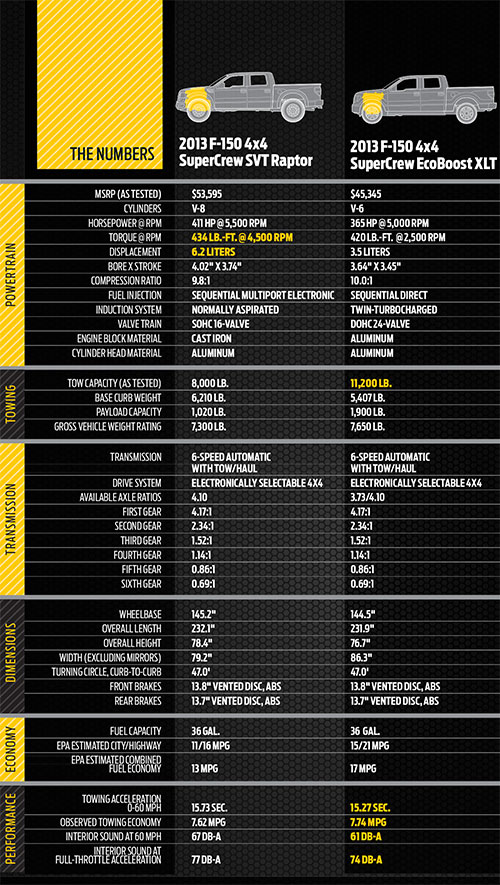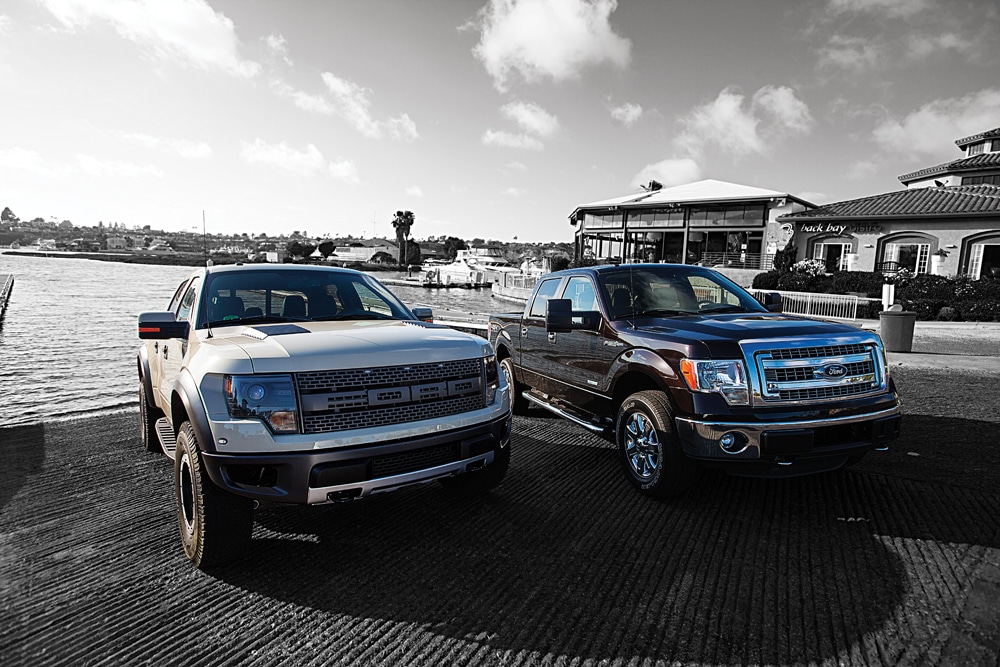
Tow Vehicle Shootout: V-8 or V-6
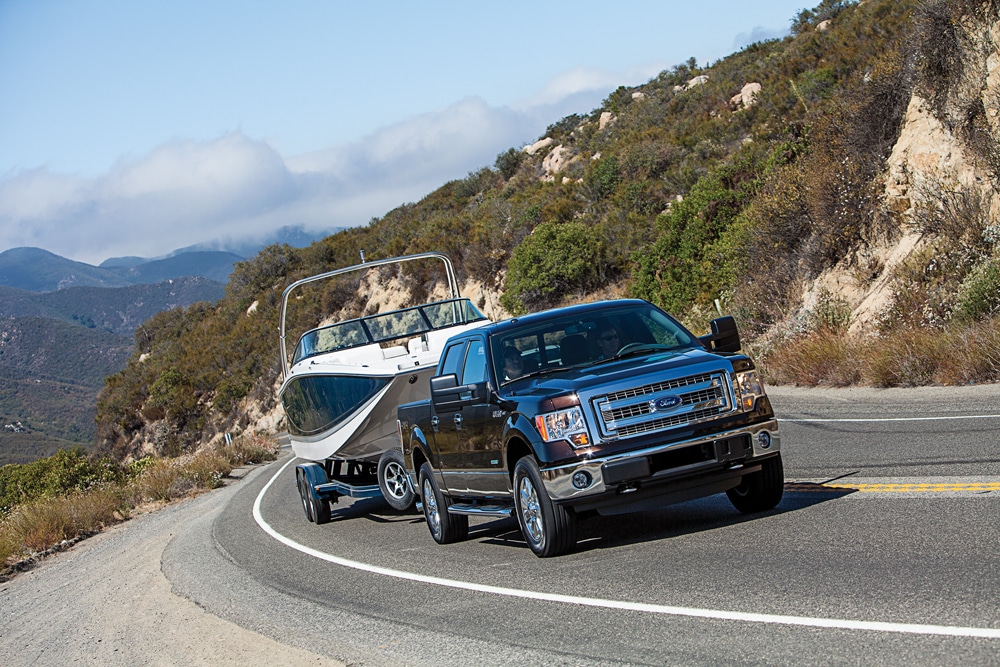
Tow Vehicle Shootout: V-8 or V-6
Highs: Quiet riding and quicker acceleration. Lows: Less stable towing on uneven pavement. Bottom Line: Great combo of daily driver and tow attributes. Robert Brown
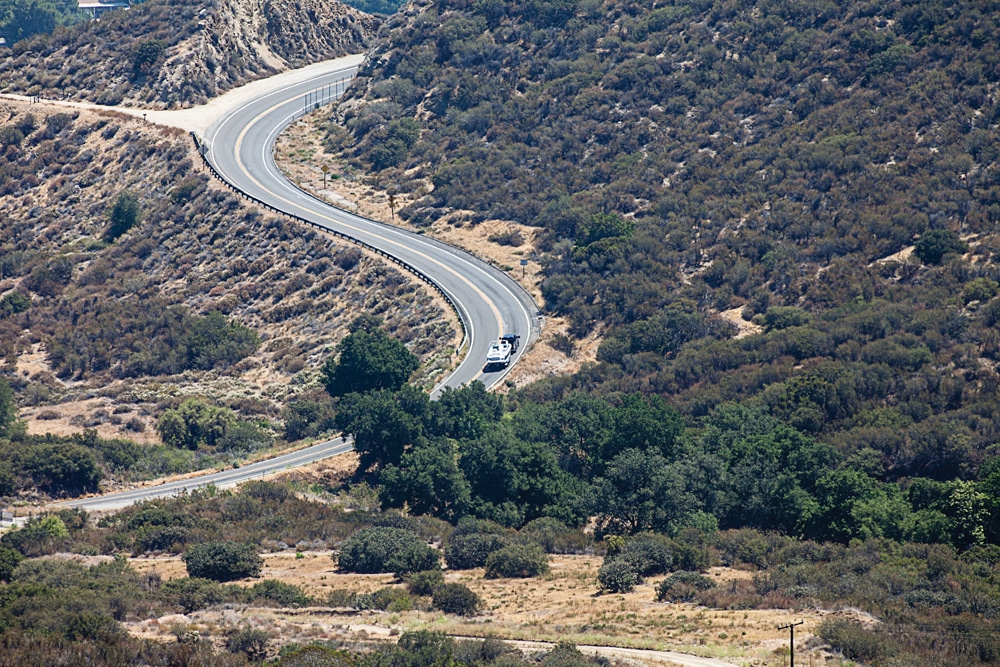
Tow Vehicle Shootout: V-8 or V-6
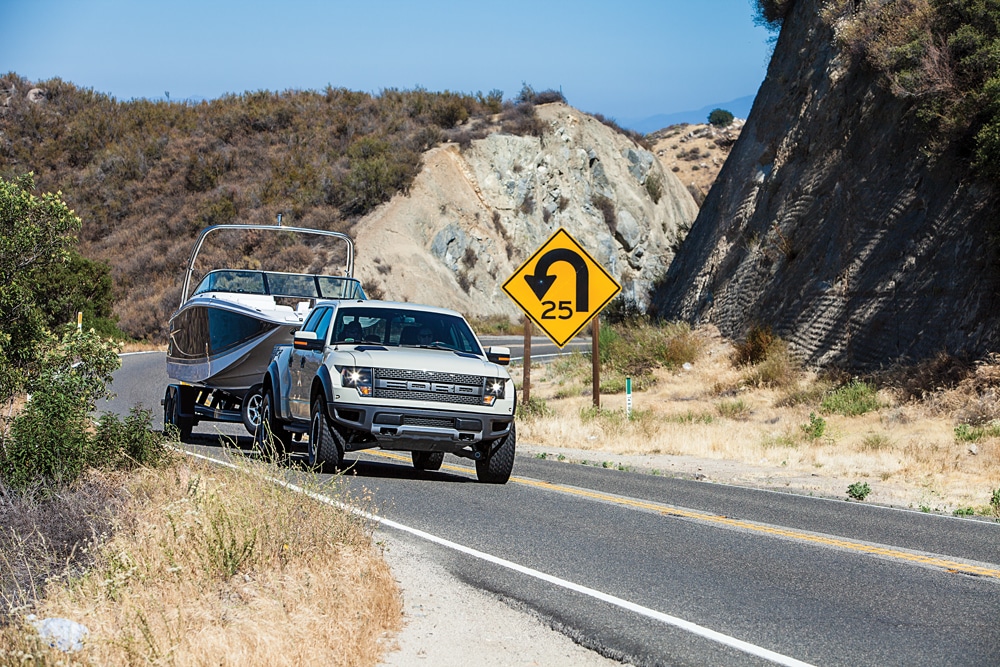
Tow Vehicle Shootout: V-8 or V-6
Highs: Stable towing at all times on all roads. Great seating comfort. Lows: Cabin sound levels higher than those measured in the EcoBoost. Bottom Line: Brawny, super stable, and offers off-road capability. Robert Brown
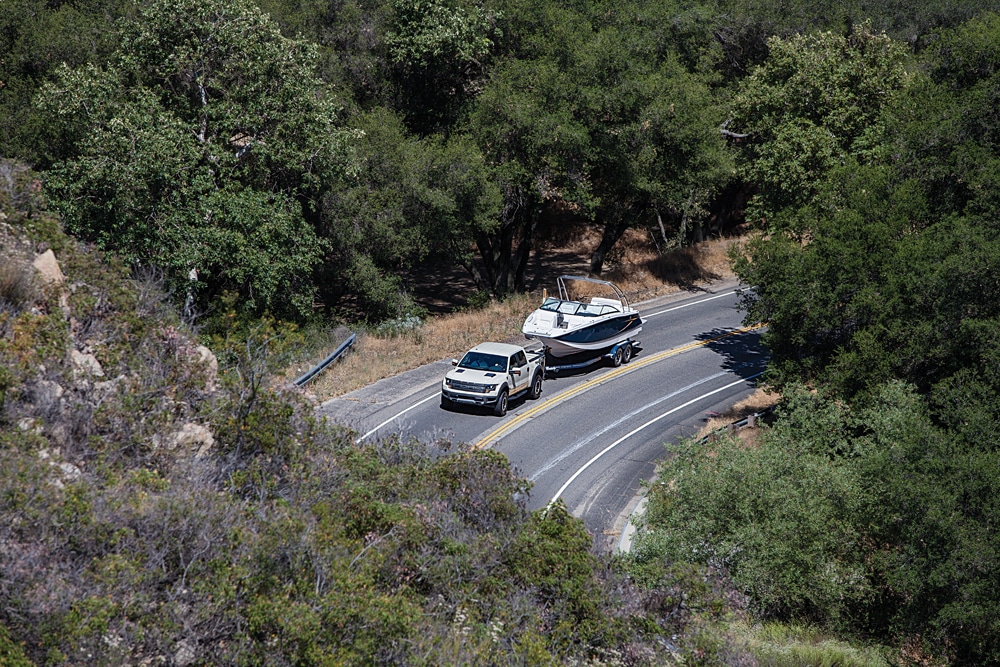
Tow Vehicle Shootout: V-8 or V-6
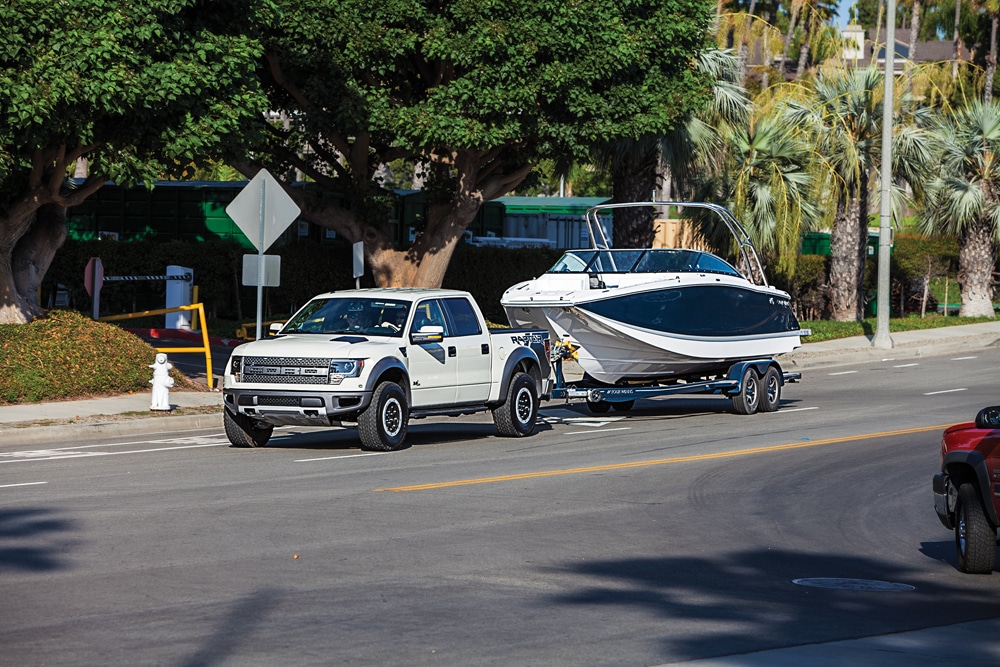
Tow Vehicle Shootout: V-8 or V-6
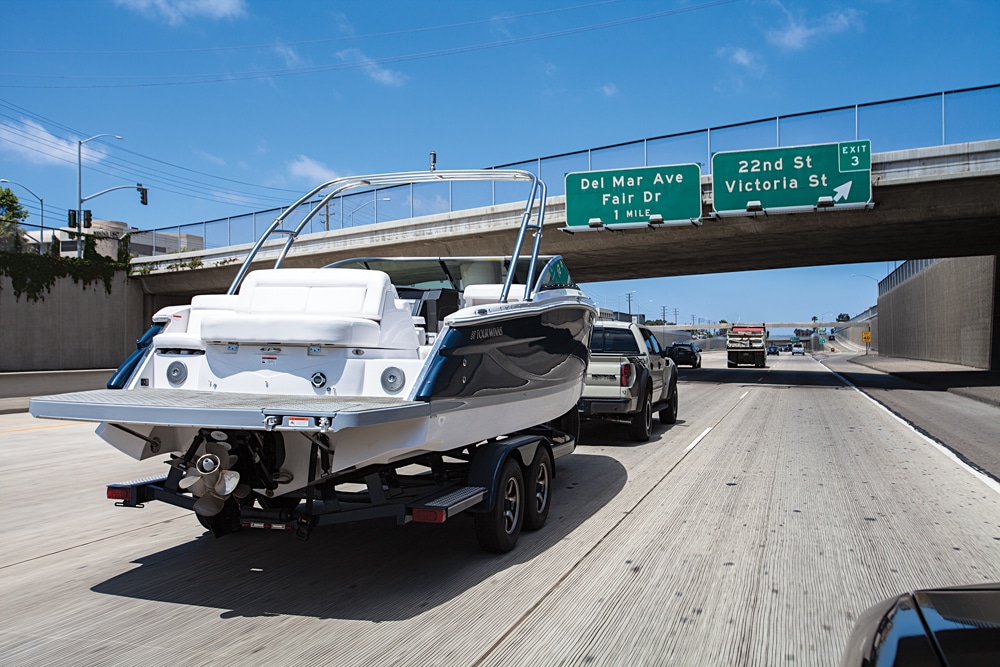
Tow Vehicle Shootout: V-8 or V-6
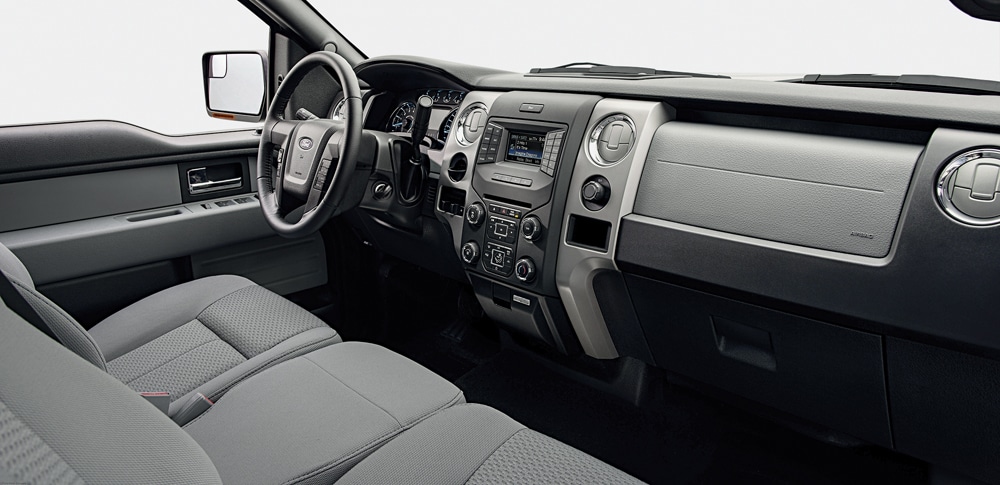
Tow Vehicle Shootout: V-8 or V-6
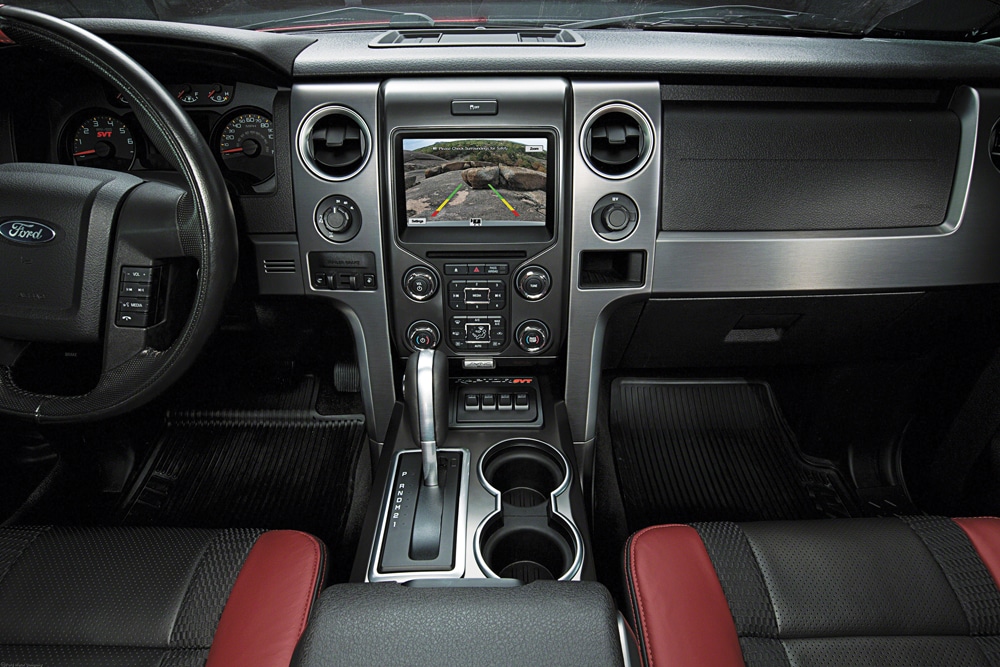
Tow Vehicle Shootout: V-8 or V-6
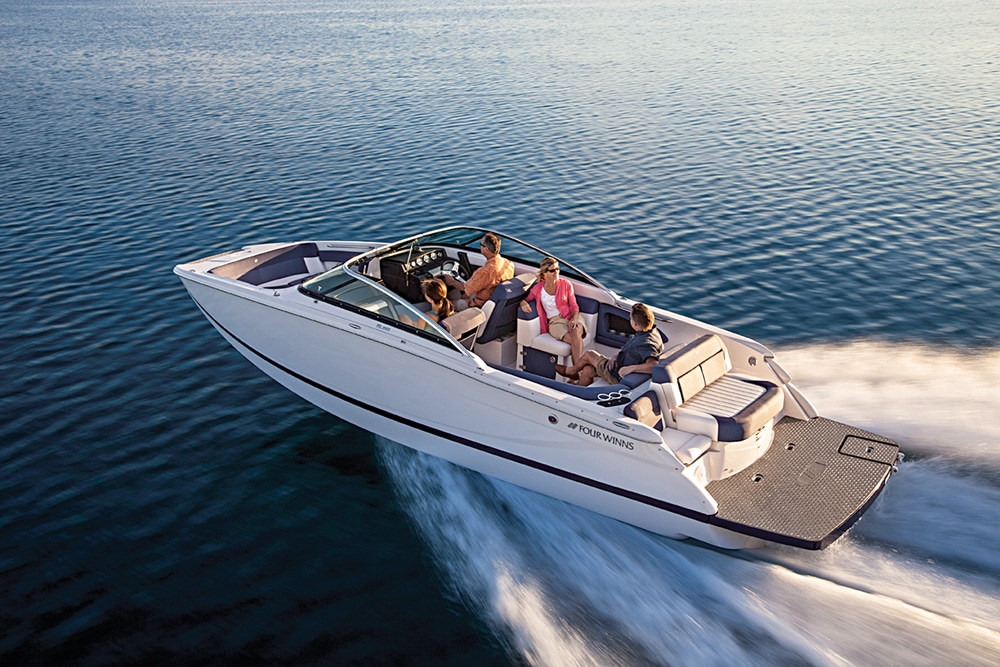
Tow Vehicle Shootout: V-8 or V-6
We all know a V-8 tow vehicle can get the job done. But tow a 7,500-pound load with a V-6? Are we nuts?
Well, yes, we are. But in this case we might be onto something. Advancing engine technologies make possible small-block trucks with big-block performance, and potential benefits to both the environment and your wallet. To test the theory, we towed 7,500 pounds of fueled-up and geared-up Four Winns SL262 through some of California’s heaviest freeway traffic and most difficult mountain roads. Twice. First with Ford’s F-150 SuperCrew XLT powered by an ambitious little 3.5-liter turbocharged EcoBoost V-6, and then with an F-150 SuperCrew SVT Raptor pushed by a more traditional 6.2-liter iron-block V-8. So can a V-6 tow like a V-8? Ride along as we seek the truth.
Power and Tow Capacity
Like a strong cup of coffee jump-starts you in the morning, torque is what gets that massive load of fiberglass, aluminum and steel rolling behind your truck. Previously the province of big-blocks and diesels, today respectable torque is also developed by both the 6.2-liter V-8 in the SVT Raptor (434 pound-feet at 4,500 rpm) and 3.5-liter EcoBoost V-6 (420 pound-feet at a low 2,500 rpm). The Raptor makes its power through eight cylinders and displacement, whereas the EcoBoost gets the job done with a twin-turbocharging system that force-feeds air to the engine under heavy throttle application. The EcoBoost also includes an aluminum block, dual overhead camshafts, four valves per cylinder and direct injection.
From Silver Seas Yachts in Newport Beach, California, we charted a route to the 405 Freeway and down to San Juan Capistrano. From there an easterly turn pitted us against the Ortega Highway, 28 miles of narrow, serpentine two-lane with a 2,565-foot elevation gain and then a 1,360-foot freefall to Lake Elsinore, the largest natural lake in SoCal. Each round trip covered more than 110 miles. First up was the F-150 EcoBoost V-6, rated at an impressive 11,200 pounds of tow capacity. Turning a relaxed 1,600 rpm at 60 mph on the freeway, the EcoBoost V-6 ran quietly and smoothly. It yanked the big Four Winns from 0 to 60 mph in an average of 15.27 seconds, a respectable hustle. And along winding Ortega Highway, this V-6 easily kept up with traffic.
By intent, the SVT Raptor is more of a Baja-bred hooligan — from the burly beat of its V-8 engine to its flared fenders and foot-wide, all-terrain tires. Yet, the Raptor didn’t annihilate the EcoBoost V-6 in acceleration. Averaging our three best runs, the 6.2-liter Raptor recorded a 0-to-60 mph time of 15.73 seconds — a fraction slower than the 3.5-liter V-6! The more powerful Raptor developed wheel-spin and axle-hop when accelerating from a standing start with the boat in tow. This slowed down the acceleration by activating the traction control. We consider this test a draw.
Fuel Economy
Towing a boat uphill usually nullifies window-sticker mileage claims. This was the case in our test. Although the EcoBoost V-6 is rated at 15 mpg city, 21 mpg highway and 17 mpg combined, it netted 7.74 mpg while towing the big Four Winns and its tandem-axle trailer.
For consistency we drove the same route the same way with both trucks, starting with full tanks, filling up at the same gas station at the midway point, and then topping off at the same pump at the finish. Yet, the EcoBoost V-6’s number was almost exactly duplicated by the V-8 Raptor, which hit the 7.62 mpg mark during its turn with the Four Winns. This reality likewise differed from the Raptor’s 11 mpg city, 16 mpg highway and 13 mpg combined window-sticker estimates. These results do not typecast the Fords as unusually thirsty, because we’ve experienced 8 mpg towing averages on other trips with other big trucks and boats. The numbers reflect the workload. City traffic, steep grades and acceleration runs aren’t easy.
Besides fuel economy, towing range and required fuel grade are also important. Both trucks can use 87-octane regular unleaded, which is good — although fine print in the Raptor brochure shows that its 6.2-liter V-8 requires premium gas to make maximum power. Both trucks have 36-gallon fuel tanks. Thus our test gives the EcoBoost V-6 a towing range of 279 miles and the V-8 Raptor a 274-mile range. We call it a tie.
However, towing economy is only part of the truck ownership experience. Daily-driver mode can be more important. Here the EcoBoost V-6 clearly wins, with an EPA-estimated 4 mpg better city fuel economy, 5 mpg better highway, and 4 mpg better combined fuel economy than the V-8 Raptor.
Comfort and Convenience
Other desirable tow qualities include ride characteristics such as interior comfort, convenience and quietness. We found the captain’s chairs in both the EcoBoost and Raptor to be comfortable, but the advantage goes to the Raptor’s 10-way-adjustable leather front seats, which offer firmer bolsters for a better overall experience.
Close cousins, these SuperCrew trucks feature similar interior architecture with fold-up rear seating and multiple storage areas. A few of the niceties found in the F-150 EcoBoost’s XLT trim level include power-adjustable pedals, a trailer-brake controller and a power sliding rear window. In particular, the rearview camera is a great asset for trailer hitching. The SVT Raptor adds heated and cooled front seats, a power passenger seat, high-intensity discharge (HID) headlights and a navigation system.
Sound levels were quieter in the EcoBoost than in the Raptor, but not because of engine din — both engines ran smoothly and quietly. Instead, the off-road-oriented tires on the Raptor create a high-frequency background hum, and the free-flowing exhaust likewise produced a growl at steady-state cruising that bumped the sound meter to 67 decibels (db-A) at 60 mph on the highway and a bit higher on coarse pavement or grooved concrete. The number jumped to 77 decibels under full-throttle acceleration with the Four Winns in tow. With its more street-oriented tires and normalized exhaust, the F-150 registered a quieter 61 decibels at 60 mph on the highway and a 74-decibel maximum under full throttle while towing.
Finally, in ride quality, the more street-oriented F-150 EcoBoost wins over the Raptor. It’s generally more comfortable over a wide variety of road conditions, including uneven concrete freeway sections, older pavement and other surface irregularities. This would make any long trip more relaxing — to a point — because the Four Winns and its trailer’s combined mass behind the EcoBoost F-150 introduced a bit of a “tail wagging the dog” feel on uneven or undulating roads. Whereas the firmly sprung Raptor, which also has a wider track than the EcoBoost F-150, remained planted and stable with the big boat in tow. Therefore, we also call comfort a draw, with better seats and overall stability for the Raptor, and quieter interior and better ride quality for the EcoBoost. So take your pick here.
Bottom Line
Ford’s 3.5-liter EcoBoost V-6 not only challenged the 6.2-liter V-8, but by our reckoning, it also narrowly won — returning slightly better mileage, proving much quieter thanks to its tires and exhaust system, pulling fractionally quicker to 60 mph, and offering better ride quality. But the SVT Raptor won in seating comfort and chassis stability, thanks to heavy-duty suspension and stiffer tires that helped with big trailer loads. Clearly this V-6 truck can do everything a gasoline V-8 can. And if you tow only occasionally, the V-6 fuel-mileage dividends should make it an even better overall choice. We’d take the F-150 EcoBoost’s quietness, better ride and superior day-to-day fuel mileage in trade for the dynamic stability offered by the SVT Raptor. Mission accomplished, EcoBoost V-6.
F-150 4×4 SuperCrew SVT Raptor
Highs: Stable towing at all times on all roads. Great seating comfort.
Lows: Cabin sound levels higher than those measured in the EcoBoost.
Bottom Line: Brawny, super stable, and offers off-road capability.
F-150 4×4 SuperCrew EcoBoost XLT
Highs: Quiet riding and quicker acceleration.
Lows: Less stable towing on uneven pavement.
Bottom Line: Great combo of daily driver and tow attributes.
